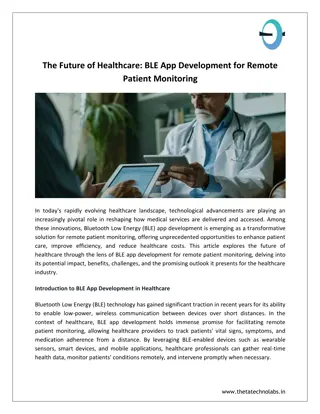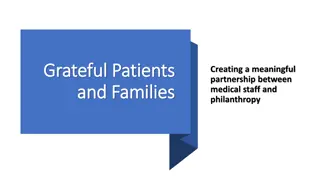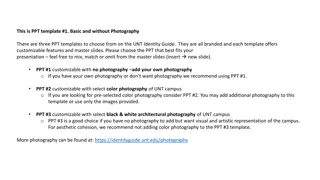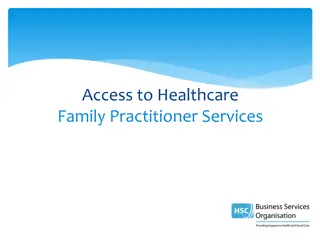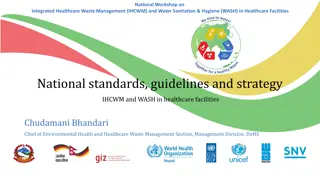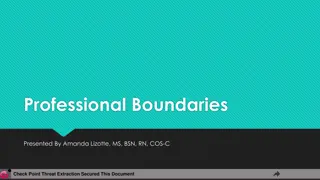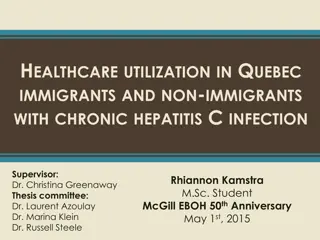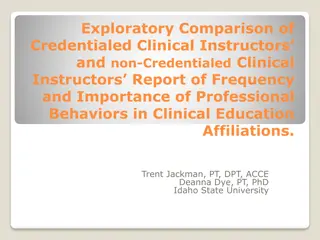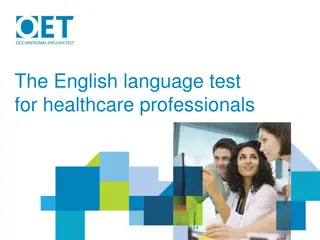Professional Role in Healthcare
Patients expect high-quality care from physicians. Professionalism in healthcare is essential for patient safety, team effectiveness, and physician well-being. Explore the elements of the Professional Role, its significance in healthcare practice, and key terms associated with it.
Download Presentation

Please find below an Image/Link to download the presentation.
The content on the website is provided AS IS for your information and personal use only. It may not be sold, licensed, or shared on other websites without obtaining consent from the author.If you encounter any issues during the download, it is possible that the publisher has removed the file from their server.
You are allowed to download the files provided on this website for personal or commercial use, subject to the condition that they are used lawfully. All files are the property of their respective owners.
The content on the website is provided AS IS for your information and personal use only. It may not be sold, licensed, or shared on other websites without obtaining consent from the author.
E N D
Presentation Transcript
T2 - Teaching the Professional Role Author: Lorem ipsum dolor sit Date: Dolor sit am
The unmodified content below was created for the CanMEDS Teaching and Assessment Tools Guide by S Glover Takahashi and is owned by the Royal College of Physicians and Surgeons of Canada. You may use, reproduce and modify the content for your own non- commercial purposes provided that your modifications are clearly indicated and you provide attribution to the Royal College. The Royal College may revoke this permission at any time by providing written notice. NOTICE: The content below may have been modified from its original form and may not represent the opinion or views of the Royal College. 2
Objectives and agenda 1. Recognize the process and content of Professional Role 2. Apply professionalism skills to examples from everyday practice 3. Develop a personal professionalism resource for everyday practice 3
Why the Professional Role matters 1. Patients expect their physicians to provide high- quality, safe medical care. 2. Being a professional is central to being a physician and requires active effort to evolve into a specialist. 3. Professional behaviour is central to patient safety and effectiveness in team-based care. 4. The resilience, wellness and self-care of a physician impacts their patients care, their co- workers and the health system, requiring the need to manage the demands of work/practice while also attending to personal health activities and constructive coping skills. 4
The details: What is the Professional Role As Professionals, physicians are committed to the health and well-being of individual patients and society through ethical practice, high personal standards of behaviour, accountability to the profession and society, physician-led regulation, and maintenance of personal health. 5
Recognizing Professional Topics Recognizing Professional Actions Integrity Reliable Resilience Responsibility Societal need Social Contract Society s expectations Standards Trustworthiness Wellness Balance Boundaries Commitment Conflict of interest Ethics, Ethical Issues Honesty Identity Behaving Fulfilling Trusting Respecting Self regulating 6
Key terms for the Professional Role Boundaries Fiduciary relationship Social contract Hidden curriculum Emotional intelligence Self-efficacy Wellness Resilience Burnout Self-care Fatigue management 7
Professional means showing commitment to: patients society profession self 8
Important to know about professionalism 1. Professionalism has multiple factors that can be taught: individual factors (i.e. behaviour and cognitive processes); interpersonal factors (i.e. process or effect of providing patient care with others); and context factorsg (i.e. variations and expectations in interactions within or across individuals, institutions, specialties, cultures, countries). 2. Focus on actively demonstrating positive professional behaviours. 3. Physicians need to demonstrate the importance of their own personal health, wellness, and resilience. 9
Skills for residents to master in developing their identity as a physician in your specialty are: 1. Learning the language 2. Learning to live with ambiguity 3. Learning to play the role 4. Learning the hierarchy and power relationships 10
Label the BEHAVIOUR Avoid judging the person 11
Positive Professional Characteristics A. Clinical competency 1. Excellent knowledge and skill 2. Effective communication 3. Sound clinical reasoning B. Personal qualities 4. Compassionate and caring 5. Honesty and integrity 6. Enthusiastic for the practice of medicine 7. Effective interpersonal skills 8. Commitment to excellence 9. Collegial 10. Demonstrates humour 12
Negative Professional Characteristics A. Clinical competency 1. Deficient knowledge and skill 2. Ineffective communication 3. Poor clinical reasoning B. Personal qualities 4. Insensitive to patients suffering 5. Lapses in honesty and integrity 6. Dissatisfaction with the practice of medicine 7. Ineffective interpersonal skills 8. Acceptance of mediocre results 9. Lack of collegiality 10. Humourless approach 13
Worksheet T3 Professionalism Scenarios and Case Discussion 14
Use role modelling to improve professional behaviour 1. Active observation of role model 2. Making the unconscious conscious 3. Reflection and abstraction 4. Translating insights into principles and action 5. Generalization and behaviour change 15
Constructive coping skills Constructive coping skills include: Positive reframing Finding meaning in work Focusing on what is important in life Maintaining a positive outlook and attitude towards work Embracing an approach that stresses work- life balance 16
Wellness responsibilities 1. Only care for patients when well enough to do so 2. Be aware of their own health, including recognizing when not well enough to provide competent care 3. Obtain help in order to ensure their own wellness 4. Adjust their practice to ensure that patients can and do receive appropriate care 5. Recognizing limits imposed by fatigue, stress or illness and taking care to ensure a healthy work- life balance 6. Avoid self-treatment 17
Personal health activities Personal health activities are associated with lower rates of burnout and improved quality of life Weekly aerobic and weight training to recommended levels Annual visits to primary care provider (i.e. family physician) Routine required health screening practices 18
Resilience, wellness and self- care 1. Have a family doctor 2. Sleep right 3. Eat well 4. Exercise regularly 5. Stay connected 19
Signs of concern about wellness Sudden or trend for isolation or absence such as not showing up for work, rounds, meeting, assignments Mood swings, teary, unusual or easily irritated or frustrated Often late to work or late with assignments More absences than is usual or typical Dishevelled, unkempt or loss of attention to self and grooming Appearance or suspicion of over consumption of alcohol or other substances 20
Objectives 1. Recognize the process and content of Professional Role 2. Apply professionalism skills to examples from everyday practice 3. Develop a personal professionalism resource for everyday practice 21
References The Canadian Medical Protective Association. Physician professionalism is it still relevant? CMPA Perspective, 2012;October special edition;4-6. Cruess RL, Cruess SR, Boudreau JD, Snell L, Steinert Y. Reframing medical education to support professional identity formation. Acad Med. 2014;89(11):1446-51. The Canadian Medical Protective Association. Physician professionalism is it still relevant? CMPA Perspective, 2012;October special edition;4-6. Eckleberry-Hunt J, Van Dyke A, Lick D, Tucciarone J. Changing the conversation from burnout to wellness: physician well-being in residency training programs.J Grad Med Educ. 2009;1(2):225-30. Shanafelt TD, Oreskovich MR, Dyrbve LN, Satele DV, Hanks JB, Sloan JA, Balch CM. Avoiding burnout: the personal habits and wellness practices of US surgeons, Ann Surg. 2012;255(4):625-33. 22
References Snell L. Flynn L, Pauls M, Kearney R, Warren A, Sternszus R, Cruess R, Cruess S, Hatala R, Dupr M, Bukowskyj M, Edwards S, Cohen J, Chakravarti A, Nickell L, Wright J. Professional. In: Frank JR, Snell L, Sherbino J, editors. CanMEDS 2015 Physician Competency Framework. Ottawa: Royal College of Physicians and Surgeons of Canada; 2015. Hodges BD, Ginsburg S, Cruess R, Cruess S, Delport R, Hafferty F, Ho MJ, Holmboe E, Holtman M, Ohbu S, Rees C, Ten Cate O, Tsugawa Y, Van Mook W, Wass V, Wilkinson T, Wade W. Assessment of Professionalism: recommendations from the Ottawa 2010 conference. Med Teach. 2011;33(5):354-63. Cruess SR, Cruess RL, Steinert Y. Role modelling making the most of a powerful teaching strategy. BMJ. 2008;336(7646):718-21. 23
Other Slides 24
Professional Key Competencies Physicians are able to: 1. Demonstrate a commitment to patients by applying best practices and adhering to high ethical standards 2. Demonstrate a commitment to society by recognizing and responding to societal expectations in health care 3. Demonstrate a commitment to the profession by adhering to standards and participating in physician-led regulation 4. Demonstrate a commitment to physician health and well-being to foster optimal patient care 25
Professional Key Competency 1 Physicians are able to: 1. Demonstrate a commitment to patients by applying best practices and adhering to high ethical 1.1 Exhibit appropriate professional behaviours and relationships in all aspects of practice, demonstrating honesty, integrity, humility, commitment, compassion, respect, altruism, respect for diversity, and maintenance of confidentiality 1.2 Demonstrate a commitment to excellence in all aspects of practice 1.3 Recognize and respond to ethical issues encountered in practice 1.4 Recognize and manage conflicts of interest 1.5 Exhibit professional behaviours in the use of technology- enabled communication 26
Professional Key Competency 2 Physicians are able to: 2. Demonstrate a commitment to society by recognizing and responding to societal expectations in health care 2.1 Demonstrate accountability to patients, society, and the profession by responding to societal expectations of physicians 2.2 Demonstrate a commitment to patient safety and quality improvement 27
Professional Key Competency 3 Physicians are able to: 3. Demonstrate a commitment to the profession by adhering to standards and participating in physician-led regulation 3.1 Fulfill and adhere to the professional and ethical codes, standards of practice, and laws governing practice. 3.2 Recognize and respond to unprofessional and unethical behaviours in physicians and other colleagues in the health care profession 3.3 Participate in peer assessment and standard-setting 28
Professional Key Competency 4 Physicians are able to: 4. Demonstrate a commitment to physician health and well-being to foster optimal patient care 4.1 Exhibit self-awareness and manage influences on personal well-being and professional performance 4.2 Manage personal and professional demands for a sustainable practice throughout the physician life cycle 4.3 Promote a culture that recognizes, supports, and responds effectively to colleagues in need 29







